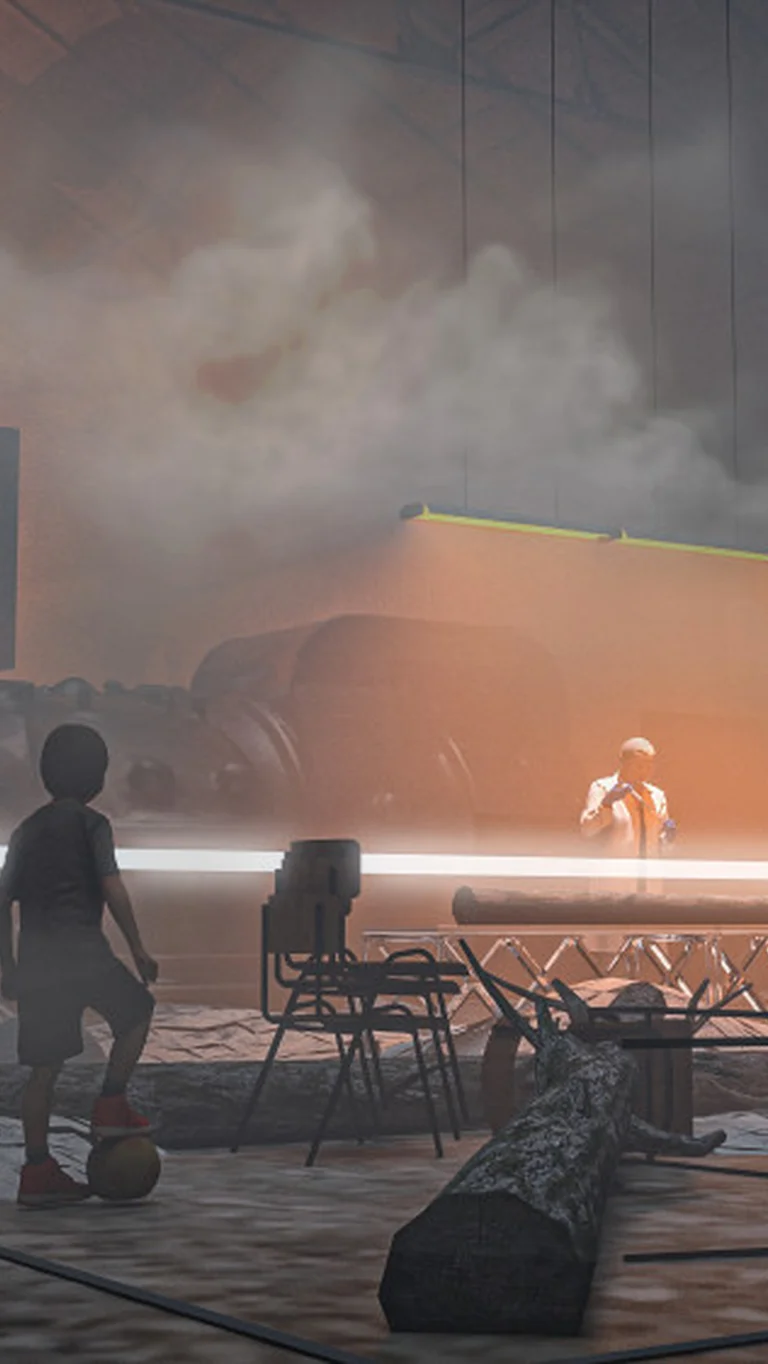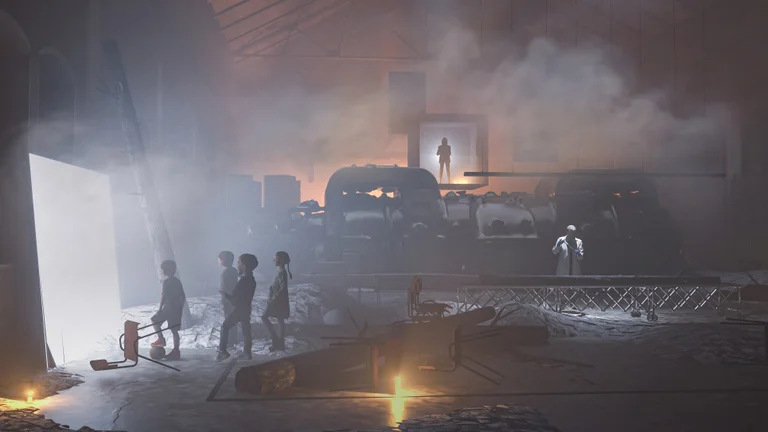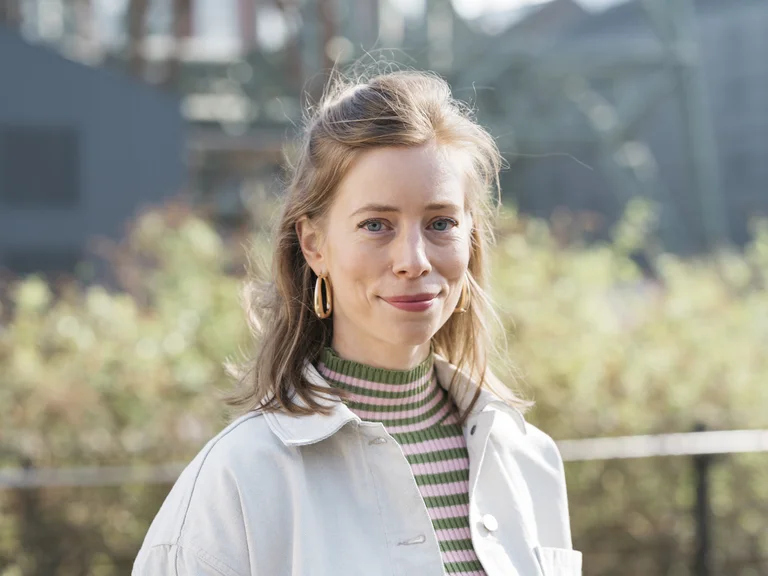
Theatre of Tomorrow
A new stage experience with 3D sound
Gen Z Don't Cry is theatre for two ears – and at the same time, it is a music theatre experiment in the truest sense: combining a sonic reinvention of the stage with the emotional immediacy of voice, body and movement. The result is a multi-layered play that explores space, sound and perception.
The acoustic perspective is key: language, music, sounds, movements, costumes and materials are all designed according to musical and sound-dramaturgical principles. Every movement defines the audible space; the material of the costumes shapes the sound of the characters; and every body sound — normally imperceptible in theatre — tells the story of the play.
„The audience experiences more than just an acoustic image of the scene; they are sensually involved in the perception of the characters.“
The basic media setup involves the performers wearing binaural microphones in their ears. What they record in the middle of the stage action is transmitted in real time to the audience's headphones. This creates a unique listening experience: each audience member hears exactly what the performers hear on stage through their microphones. Even someone sitting in the last row of the stands, far from the action on stage, can still hear a whisper with immediate intimacy. When else is it possible to hear through another person's ears? The audience experiences more than just an acoustic image of the scene; they are sensually involved in the perception of the characters — a change of perspective that allows them to experience this form of musical theatre in a completely new emotional way.
A dystopian stage setting can be seen. There are mountains of ash containing the detritus of civilisation, a human-sized screen and a cube that seems to float above the turbines, all of which are surrounded by fog. The young performers are positioned in between. Is this a future scenario? A collapsed world yet to come, or already our reality?
The stage space dissolves acoustically and extends behind the audience, surrounding them by 360 degrees. The sound can be experienced spatially — not from the outside, but from within your own head. Artificially designed sound spaces overlay the Bochum Turbine Hall, providing audible information about the feelings and actions of the characters and making the story a direct sensory experience.
These characters are played by ten young people and one actress. Everyday situations intermingle with visions of the future and flashbacks to an unclear past, creating a sense of virtual reality. Somewhere amidst this intangible temporality, we encounter Cassandra, an operator in a futuristic planetarium. She runs simulations. She makes prophecies which the ten young people reject and protest against. Is this where the future is being negotiated? Is a supernova being programmed? How valuable are visions, and how close do they actually have to be to reality?
„What new theatrical forms emerge when you listen through someone else's ears?“
This production by Munich based Sounddramaturgien-Kollektivs, consisting of Felix Kruis, Julian Kämper and Dominik Breinlinger (who are working alongside Wolfgang Menardi on this project), consciously operates at the intersection of music, performance, spatial art and auditory narration. It also comments on today's sound culture, in which young people consume the world through headphones — podcasts, music, games and social media — and have a highly individual perception of sound. The production reflects this reality, transforming it into a new hybrid stage format with emotional immediacy. The Kurdish-German musician Gîn Bali creates an additional musical layer live. In the futuristic world of GenZ Don't Cry, she offers an alternative narrative perspective.
Music theatre productions that take their name seriously always consider the role of sound in conveying meaning, emotion and dramaturgy. GenZ Don't Cry takes this question in a new direction, asking: what does scenic storytelling mean when the entire space shifts into the ear? What happens when the voice is heard not only from the front, but also from behind or from the side? When a costume's material is given its own acoustic identity? In this concept, every sound becomes music, every movement becomes a score and every space becomes a composition. Ruhrtriennale audiences can thus experience new boundaries between music, sound, theatre and space. What new theatrical forms emerge when you listen through someone else's ears?
About the author
Britta Schünemann is the Ruhrtriennale's head dramaturge and responsible for mediating the Junge Triennale projects. After completing a Master's degree in Music and Latin at the University of Osnabrück, she undertook stage management training at the Berlin State Opera, specialising in the scenic interpretation of music theatre. She then completed a two-year university course in music theatre education at the Mozarteum in Salzburg. She then held positions at the Nuremberg State Theatre and the Stuttgart Young Opera, followed by a teaching position. From 2017 to 2022, she developed educational programmes for young people in her role as a music theatre educator at Musiktheater im Revier in Gelsenkirchen.

